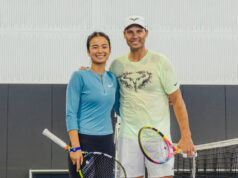AROUND this time last year, Maria Sharapova basked in the glow of her return to the Grand Slam stage. Having been denied participation at the French Open and Wimbledon following a 15-month suspension for doping, she succeeded in getting a wild-card entry at the United States Open. And she went on to make the most of the opportunity, basking in the glow of her return to primetime billing, and at Arthur Ashe Stadium to boot, en route to a stunning victory over then-World Number Two Simona Halep.
Needless to say, the development fueled a narrative that underscored her trademark determination. The match itself, decided in three sets over two hours and 44 minutes of play, was proof positive of her resolve to steadily climb up the rankings (where she stood 146th) and rub elbows with the best of the best anew. Unfortunately, it told only part of the story. In subsequent matches, her prolonged absence from organized action told on her competitiveness; she bowed out in the fourth round at Flushing Meadows, and, in subsequent major championship appearances, could do no better than a quarterfinal stint at Roland Garros.
That Sharapova has come a long way since her defeat of Halep last year cannot be denied. She’s currently ranked 22nd in the world, and remains one of the biggest draws in the women’s tour. That said, she continues to be in search of the consistency she requires to stand toe to toe with the acknowledged elite. Yesterday, for instance, she got blown off the court by Carla Suarez Navarro, who was seeded eight spots below her and whom she had beaten in four of their previous five matches.
Significantly, Sharapova is still supremely confident in her capacity to eventually meet her objective. “First of all, if I didn’t have the belief to keep doing this and to keep having the motivation and the grind of doing this every day in order to get myself in these positions, I don’t think I would be here,” she noted in her post-mortem. The bad news is that her mindset is exactly that of all the others ahead of her. In other words, she needs to avoid being “a little too up and down,” as she described her performance yesterday, and fast. Else, she will find herself coming close but ultimately falling short.
Anthony L. Cuaycong has been writing Courtside since BusinessWorld introduced a Sports section in 1994.



